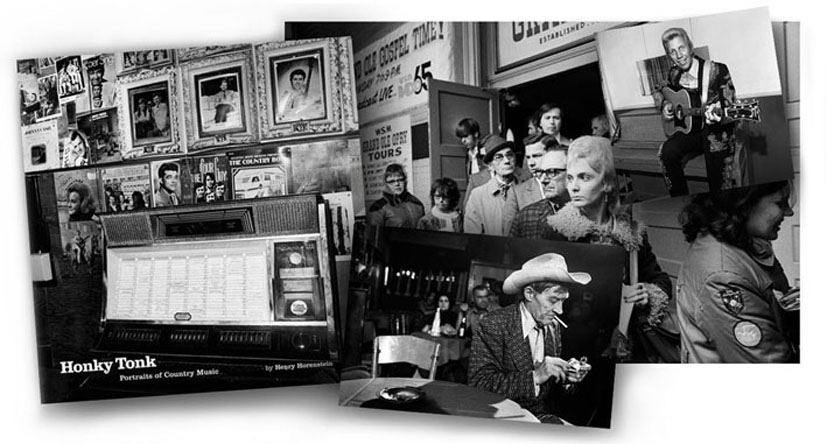
Horenstein's photography underlines again just how far country music has moved from its roots. It's interesting to note that the most recent photographs in the book are of neo-traditional artists like Bill Kirchen and Dale Watson, photographed in 2011; the earliest pictures in the book are from 1972. It is doubtful the audience, sounds and looks that the Music Row major labels and modern country radio court today would want to be associated with the people represented in these pages - even back in the day. Many appear to be living and working at subsistence level and the music of the honky-tonks was their outlet and way of letting off steam.
Yet these people were the lifeblood of the music, seen in such down-home venues as Tootsie's Orchard Lounge on Lower Broadway in Nashville or Hillbilly Ranch in Boston. The photographs show why some acts were pushed away from the honky-tonks and towards the more lucrative cross-over cosmopolitan circuit that the industry favoured and sought. Honky Tonk is not exactly a forgotten world, as all over America there still exists a network of clubs and bars that cater for acts and audiences who still want their music served up as real deal country music. Other photographic books that have covered this scene are Bill Rouda's Nashville Lower Broad, which focused on the revival of music in that then run-down area of Nashville,a music scene that was started by Greg Garing, Paul Burch and BR5-49. An interesting companion piece is Leon Kagarise's Pure County which covered the music from 1961 to 1971. Kagarise's photography is all in colour while Horenstein's is in black and white and both have their own qualities and validity.
The portraiture in Honky Tonk is both real and realised. Horenstein’s subjects are captured at a specific moment in time; queuing, dancing, drinking, posing or performing. He captures what that genre was over a period of time. Largely in low-key venues he has photographed a grass-roots movement with respect for that particularly American form that inspired him on many levels.
Other striking books by Horenstein have been about the human body, burlesque and animals as well as a manual on moving beyond basic photography. Horenstein clearly has an eye, a gift and a feel for his subjects and Honky Tonk delivers, as Marty Stuart says on the dust jacket, these are "images (that) are timeless treasures".
